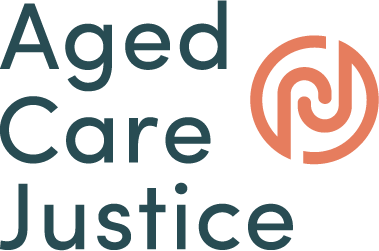Restraints and Restrictive Practices in Aged Care Facilities
By Lani Nguyen[1]

Recent legislative reform regarding the use of restraints and restrictive in aged care is insufficient to protect residents’ rights.
Royal Commission Response
After thoroughly examining the issue, the Commission recommended as follows:
- Improved public awareness of the right to freedom of movement of residents in aged care[2]
- Better regulation of restraints[3]
- Restricted prescription of antipsychotics in residential aged care[4]
Recent Developments
On 27 May 2021, the Morrison government introduced the Aged Care and Other Legislation Amendment (Royal Commission Response No. 1) Bill 2021 (‘the 2021 Bill’), and this came into effect on 1 July 2021.[5] Schedule 1 of the 2021 Bill focuses on legislative reforms to restraints, and brings welcome changes such as strengthening regulations around the use of restraints. However, many problems remain ignored, two of which are: amending legislative definitions and increasing residents’ awareness of their rights concerning restraints.
ALARM Recommendation 1:
The new definition of ‘restrictive practice’ should be amended to include the phrase ‘ability to make a decision’.

The Bill replaces any references to restraint, previously defined as:
“any practice, device or action that interferes with a consumer’s ability to make a decision or restricts a consumer’s free movement”,[6]
with a new concept of restrictive practice:
“A restrictive practice in relation to a care recipient is any practice or intervention that has the effect of restricting the rights or freedom of movement of the care recipient”.[7]
Previously, the Aged Care Act 1997 (Cth) (‘Aged Care Act’) and relevant principles explicitly mentioned only physical and chemical restraints.[8] Failing to mention other forms of restraint was problematic because other restraints, such as seclusion, can also damage individuals’ health and wellbeing.[9] Thus, the broader scope of restraints impliedly covered by the new ‘restrictive practice’ is a pleasing change.[10]
However, the new definition is still problematic, particularly in the context of chemical restraints. The previous definition covered restrictions that interfered with an aged care resident’s “ability to make a decision” (underlined above), yet the current definition of restrictive practice omits this element.[11] Omitting the definitional reference to residents’ “ability to make decisions” may make it more difficult for families to lodge statutory-based complaints about misuse of chemical restraints compared to the previous legislation.[12] This is because some medications, such as psychotropic medicines, may not necessarily restrict residents’ free movement, but can have a similar effect by changing their minds, behaviours and emotions.[13]
Indeed, many submissions to the Royal Commission outline how chemical restraints have affected residents’ decision-making capacity. One anonymous submission states:
“For the first week mum was in the high care ward, she was heavily sedated – I mean couldn’t talk and couldn’t keep her eyes open or head up! [This] was a shock as just the day before she was having very normal conversations and meeting with her friends out in the general area.”[14]
Thus, given providers’ unacceptably high use of medications to manage behaviours,[15] ALARM recommends that the current definition of restrictive practice be amended to re-instate in the definition, practices and interventions that interfere with residents’ ‘ability to make a decision’ so that residents may find it easier to make statutory-based [16] complaints about the misuse of chemical restraints.
ALARM Recommendation 2:
Require aged care providers to give aged care residents and their families information about the restraints.

Restrictive practices are regulated as set out in Part 4A of the Quality of Care Principles 2014 (Cth).[17] ALARM welcomes these regulations being strengthened to better protect residents, such as requiring certain conditions to be met before an approved provider can use restraints.[18] However, a substantial problem remains: the Aged Care Act and relevant principles do not expressly require that residents or their family members be informed of these regulations. Indeed, residents and/or their families are also often not properly informed before restraints are used.[19] This is troubling because a lack of knowledge about providers’ legal obligations and responsibilities can prevent residents and families from recognising unlawful transgressions and taking remedial action, such as accessing legal services and/or lodging complaints.
Indeed, Australian Healthcare Associates (‘AHA’) notes that consumer awareness of restraint practices seems low,[20] and that there is “a sense that providers could engage – unchecked – in practices inconsistent with the [Quality of Care Principles]”.[21] Consequently, further legislative amendments are required so that residents and their families can be sufficiently informed of their rights and responsibilities regarding providers’ use of restraints. In particular, informing residents and their families of common law rights is especially important because it may empower them to seek legal assistance when unlawful restraint occur.
For example, the New South Wales Civil and Administrative Tribunal recently found that a resident who lives in a memory support unit in which she is prevented from leaving by way of a coded keypad could constitute false imprisonment.[22] Given that many residents report being locked in their rooms,[23] informing residents about the elements of false imprisonment may encourage them to take legal action against providers, and thus prevent these unlawful restrictive practices from further continuing.
Who should give information to residents and families?
Aged care providers should provide such information to residents and family members for two main reasons. Firstly, since providers choose to use restrictive practices, it is appropriate that they inform residents of their rights. Secondly, such a requirement may improve staff members’ understanding about using restraints. Many submissions to the Royal Commission,[24] and the Commission’s findings,[25] highlight that aged care providers lack adequately skilled staff. Concerningly, the AHA found that aged care staff and providers do not always fully understand what constitutes unlawful physical or chemical restraint.[26] Thus, mandating that aged care providers educate residents and their family members about unlawful restraint may improve both residents’ and staff members’ knowledge,[27] consequently improving residents’ welfare.
However, placing responsibility on aged care providers can be risky: evidence before the Commission demonstrates that providers may not always communicate clear information to residents.[28] ALARM agrees with AHA’s statement that “[p]roviders have an important – but not exclusive – role to play in educating consumers about restraint”.[29] Given these realities, not-for-profit, advocacy and reform groups in the aged care sector should now develop resources specifically designed to increase residents’ knowledge about their legal rights and providers’ legal responsibilities regarding, amongst many other issues, the use of restrictive practices. Indeed, educating residents and families may empower them to take legal action, which is important as ALARM wants to see cases which set a precedent and educate the whole aged care sector about the line which is clearly drawn between lawful and unlawful restrictive practices.
Get Help
If you or someone you know needs legal assistance, we encourage you to fill out ALARM’s GetHelp form on our website at www.ALARM.ORG.AU; or contact ALARM on (03) 9016 3248; or email us on info@agedcarejustice.org.au. You may then select, or, if you wish, we will direct you to, one of our Allied Law Firms for an initial meeting and advice, at no cost to you. Thereafter, you can decide whether to proceed with a formal legal complaint. If you do wish to proceed, costs arrangements, if any, will need to be discussed, and agreed, with the firm.
Sources:
[1] Lani Nguyen, Law Student, Monash University, ALARM Inc. Volunteer. The author acknowledges the valuable assistance of Senior ALARM Volunteer Lawyers in the preparation of this article.
[2] Royal Commission Final Report: Recommendations, (2021, vol. 1) p. 227. Available at: https://agedcare.royalcommission.gov.au/sites/default/files/2021-03/final-report-volume-2_0.pdf. (Hereafter, “R.C. Final Report”).
[3] Ibid 221.
[4] Ibid 252.
[5] Parliament of Australia, Aged Care and Other Legislation Amendment (Royal Commission Response No. 1) Bill 2021, (Online Bill Tracking, 22 August 2021) < https://www.aph.gov.au/Parliamentary_Business/Bills_LEGislation/Bills_Search_Results/Result?bId=r6723>. (Hereafter, “The 2021 Bill”.)
[6] Quality of Care Principles 2014 (Cth), version F2021C00292, s 4.
[7] The 2021 Bill, s 54-9 (1).
[8] See Quality of Care Principles 2014 (Cth), version F2021C00292, Schedule 4A.
[9] See for example, South Australian Office of the Senior Practitioner (2017). Restrictive Practices Reference Guide for the South Australian Disability Service Sector. (Adelaide: Government of South Australia). This notes that potential risks of seclusion include self-harm, emotional trauma and injury/death in the event of an emergency, amongst other risks.
[10] For example, the Australian Department of Health states that there are five types of restrictive practices: chemical restraint, environmental restraint, mechanical restraint, physical restraint and seclusion. Available at: https://www.health.gov.au/health-topics/aged-care/providing-aged-care-services/working-in-aged-care/restrictive-practices-in-aged-care-a-last-resort.
[11] See for example, comments on the 2021 Bill by the, Law Council of Australia, 7 June 2021, p. 8. Available at: https://www.lawcouncil.asn.au/publicassets/d0e4ed75-47c7-eb11-943c-005056be13b5/4015%20-%20Aged%20Care%20Royal%20Commission%20Response%20No%201%20Bill%202021.pdf. The Law Council similarly highlights that this new definition requires further amendment.
[12] The Law Council notes that ‘[t]he current definition of ‘restrictive practice’ in the Bill may not so clearly apply to chemical restraints as intended by the Royal Commission’. Ibid, point 18.
[13] R. C. Final Report: Care, Dignity and Respect (2021, vol. 2) p.98 (“Royal Commission, Vol 2”). Available at: https://agedcare.royalcommission.gov.au/sites/default/files/2021-03/final-report-volume-2_0.pdf.
[14] General submission to the Royal Commission. Document identifier: AWF.001.02011.00_0004. Available at: https://agedcare.royalcommission.gov.au/media/27792.
[15] See for example the Royal Commission’s statement that “We heard many instances of antipsychotic drugs, such as risperidone, and a range of sedatives, being used to manage changed behaviours of people living with dementia”.
[16] ALARM notes that the phrase ‘ability to make a decision’ likely makes no difference to residents’ common law rights in relation to intentional torts (false imprisonment). False imprisonment involves an individual being unlawfully and totally restrained, and does not consider individuals’ ability to make decisions.
[17] Quality of Care Principles 2014 (Cth); Australian Healthcare Associates, ‘Independent review of legislative provisions governing the use of restraint in residential aged care’. Accessed 15 July 2021 at: https://www.ahaconsulting.com.au/projects/restraints-principles/ (Hereafter “AHA Review”).
[18] The 2021 Bill, s 54-10(1).
[19] For example, the Royal Commission reported that “aged care and medical staff members did not obtain informed consent from [a] family prior to prescribing and administering [certain] medications” R.C. Final Report, Volume 2, p.98. Available at: https://agedcare.royalcommission.gov.au/sites/default/files/2021-03/final-report-volume-2_0.pdf.
[20] AHA Review, p.37. Available at: https://www.health.gov.au/sites/default/files/documents/2021/02/independent-review-of-legislative-provisions-governing-the-use-of-restraint-in-residential-aged-care-final-report.pdf.
[21] Ibid, p.38; Consider legislative requirements in s 15E, Division 2 (Restrictive Practices), Part 4A, Behaviour support and restrictive practices, Quality of Care Principles 2014 (Cth).
[22] Re FNX [2021] NSWCATGD 4, [82].
[23] See for example, Royal Commission Hearings, 3 September 2019, Exhibit 9-8, Melbourne Hearing 1, Statement of Neale Radley, WIT.1251.0001.0001, [26].
[24] See for example, submission by The Australian Nursing and Midwifery Federation. Document ANM.0020.0001.0001. Available at: https://agedcare.royalcommission.gov.au/system/files/2020-08/ANM.0020.0001.0001.pdf.
[25] Royal Commission Final Report: Vol. 2, p.55. Available at: https://agedcare.royalcommission.gov.au/sites/default/files/2021-03/final-report-volume-2_0.pdf.
[26] AHA, Review pp. 41,45.
[27] ALARM firmly believes that aged care staff must be properly trained so that they understand their obligations and responsibilities regarding the use of restraints and restrictive practices. This recommendation can be viewed as an additional buffer against inadequately trained staff.
[28] See for example, Exhibit 6-15 Witness Statement of Anamaria Ng. Document WIT.0169.0001.0001. Available at: https://agedcare.royalcommission.gov.au/media/11381.
[29] See above, n 15, p.39.
Disclaimer:
The views expressed in this article are the views of the author. The contents of this article are for general information purposes only and do not constitute legal advice, are not intended to be a substitute for legal advice, and should not be relied upon as such. Legal advice should be sought prior to any action being taken in reliance on any of the information. If you are in need of legal advice and/or assistance about aged care matters, please seek legal advice directly or via ALARM’s GET HELP form on its website: www.agedcarejustice.org.au.
